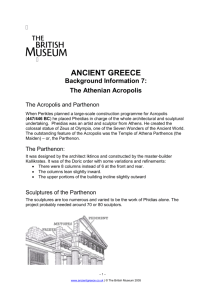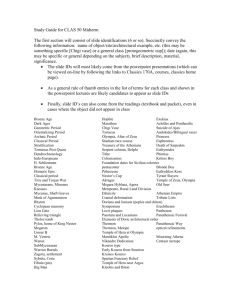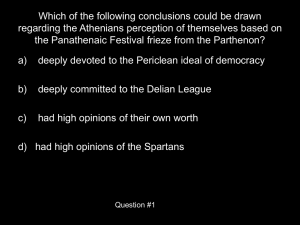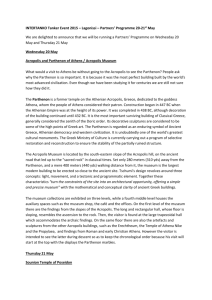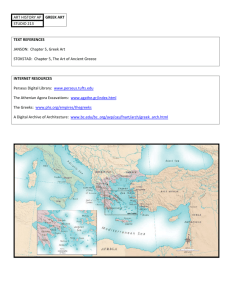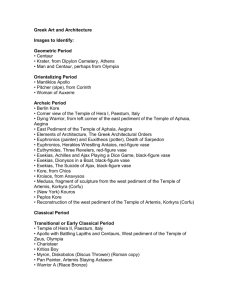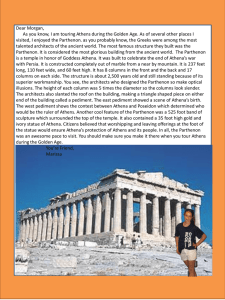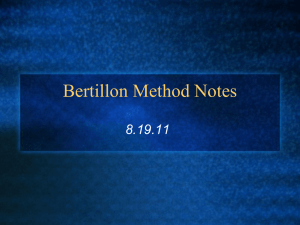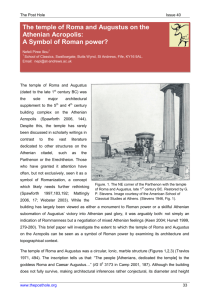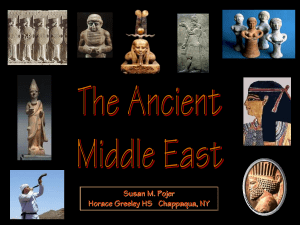The Temple of Roma and Augustus
advertisement
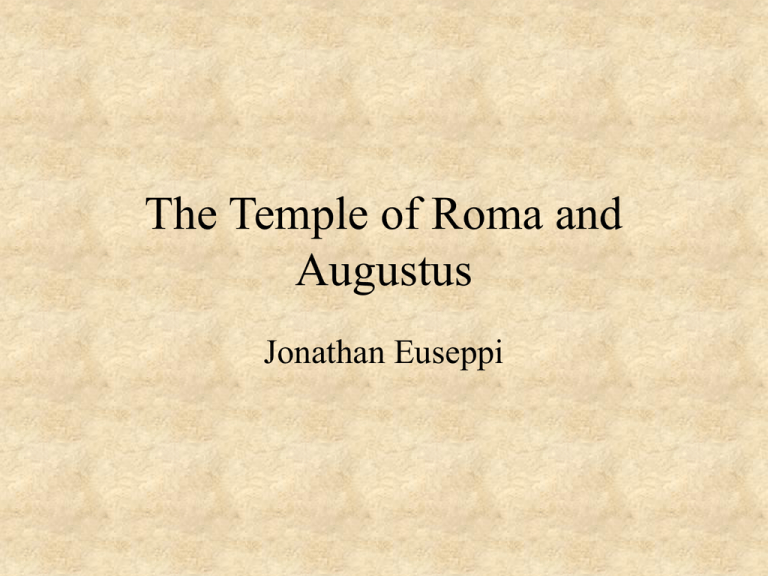
The Temple of Roma and Augustus Jonathan Euseppi Purpose Temple that serves as an Imperial Cult. A focal point for loyalty to Rome and the emperor. The goal was to become integrated into the centre of religious, political and economic life. Focused loyalty from different conquered provences. Association with Roma attempted to make worship of emperor inseparable from the worship of the state. Extravagant festivals entertained the common people. Location • Circular temple built 23 meters east of the Parthenon. • Situated more or less on the same longitudinal axis as the Parthenon. • Situated at the very edge of the eastern terrace, where the natural rock formation of the acropolis begins to descend to the south and east. • Location perserves as much space in front of Parthenon as possible. • Terrace needed to support foundation. Architecture • Made of Pentelic white marble. • Rectangular Foundation. • 9 Ionic columns which are copies of the Erechtheion. • Details of the exterior decoration are also copies from Erechtheion. • Diameter is greater than 8 meters. • Conical roof measures 9 meters high. • Attempt to make the diameter and the height the same. Architecture • 64 blocks of the superstructure have been identified. • An almost complete reconstruction is possible. • No interior walls have been recovered. • Uncertain whether there was a cella or if the building was an open conolade. Problem with Dating Temple • Temple is not mentioned in any ancient literature. • Have been able to identify temple only by inscription on one of the epistyle blocks. • The People have dedicated this building to the goddess Roma and the Caesar Augustus when the hopolite general was Pammenes (son) of Zenon and Marathon, priest of the Goddess Roma and Augustus “Soter” on the Acropolis, when the priestess of Athena / Polias was Megistes (daughter) of Asklepedes of Halai. In the archonship of Areius (son) of Dorion of Paiania. Problems with Dating the Temple • Inscription mentions the archon, the Priestess of Athena Polias, and the hopilite general who was also the priest of the Goddess Roma and Augustus. • Still not able to date the temple precisely. • Nothing known about Areos the archon. • Pammes: The hopolite general gives us more of a time frame. • Incription reffers to the emperor as Augustus: A title he did not receive until after 27 B.C. One Possible Date • Sulla destroyed many buildings on the Acropolis. • Possibly built simulaneously with the Erechtheum’s restoration around 25 B.C. • Discarded comice block probably from the original west pediment of Erechtheum found in the foundation. • Damaged material from old Erectheum used to fill the new foundation. • Possibly the same architect, Diogenes, reponsible for overseeing construction. Second Possible Date • Around 2 B.C. Gaius Ceasar, went East to undertake negotiations with the Parthians. • Roman’s propaganda campaign. • Symbolic association with the Parthenon. • Seen as victory monument to defeat of Parthians, as Parthenon is victory monument to defeat of Persians.
